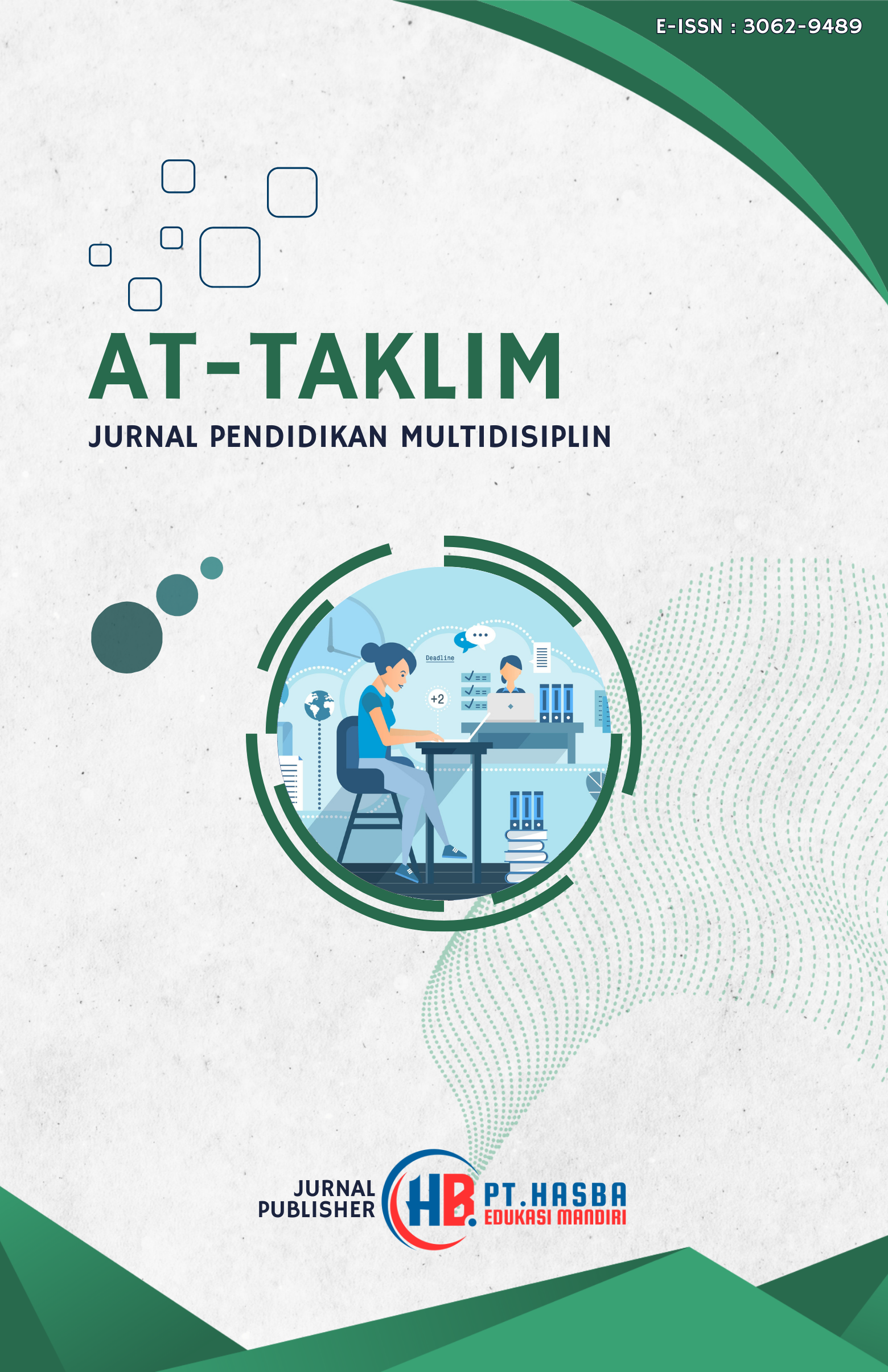PENERAPAN STRATEGI DIFERENSIASI OLEH GURU UNTUK MEMENUHI KEBUTUHAN BELAJAR SISWA DI SEKOLAH DASAR
DOI:
https://doi.org/10.71282/at-taklim.v2i7.678Keywords:
learning strategies, differentiation, learning needs, teacher, studentAbstract
The role of teachers in implementing learning strategies is crucial to meeting the diverse learning needs of students. Since each student differs in terms of character, interests, readiness, and learning styles, teachers are required to create flexible and adaptive learning experiences. The aim of this study is to describe various strategies employed by teachers to adjust learning processes to meet students' individual needs. This research uses a qualitative descriptive approach, combining literature studies and direct field observations to obtain in-depth information. The findings show that strategies such as differentiated instruction, the use of diverse learning media, and the application of a humanistic approach are effective methods for creating an inclusive and meaningful learning process. These approaches can increase student engagement, stimulate creativity, and help achieve learning objectives optimally. Thus, the teacher's ability to select and apply the right strategies becomes a key factor in supporting students' academic development and character formation.
Downloads
References
Adlini, M. N., Dinda, A. H., Yulinda, S., Chotimah, O., & Merliyana, S. J. (2022). Metode penelitian kualitatif studi pustaka. Edumaspul: Jurnal Pendidikan, 6(1), 974–980. https://doi.org/10.33487/edumaspul.v6i1.3394
Dewantara, K. H. (2013). Ki Hadjar Dewantara: Pemikiran, konsepsi, keteladanan, sikap merdeka. Universitas Sarjanawiyata Tamansiswa.
De Neve, D., Devos, G., & Tuytens, M. (2015). The importance of job resources and self-efficacy for beginning teachers' professional learning in differentiated instruction. Teaching and Teacher Education, 47, 30–41.
Dixon, F. A., Yssel, N., McConnell, J. M., & Hardin, T. (2014). Differentiated instruction, professional development, and teacher efficacy. Journal for the Education of the Gifted, 37(2), 111–127.
Firmender, J. M., Reis, S. M., & Sweeny, S. M. (2013). Reading comprehension and fluency levels ranges across diverse classrooms: The need for differentiated reading instruction and content. Gifted Child Quarterly, 57(1), 3–14.
Gray, J. (2020). Differentiated instruction and the benefits to student learning outcomes. Journal of Educational Research, 25(3), 112–128.
Herwina, S. (2021). Pembelajaran diferensial dalam perkembangan motorik anak usia dini. Jurnal Pendidikan Anak, 7(2), 45–59.
Ismajli, H., & Imami-Morina, I. (2018). Differentiated instruction: Understanding and applying interactive strategies to meet the needs of all students. International Journal of Instruction, 11(3), 207–218.
Pham, H. L. (2012). Differentiated instruction and the need to integrate teaching and practice. Journal of College Teaching & Learning, 9(1), 13–20.
Roy, A., Guay, F., & Valois, P. (2013). Teaching to address diverse learning needs: Development and validation of a differentiated instruction scale. International Journal of Inclusive Education, 17(11), 1186–1204.
Rusadi, & Rusli, M. (2021). Merancang penelitian kualitatif dasar/deskriptif dan studi kasus. Al-Ubudiyah: Jurnal Pendidikan dan Studi Islam, 2(1), 48–60. https://doi.org/10.55623/au.v2i1.18
Saleh, S. (2016). Analisis data kualitatif. Pustaka Ramadhan.
Santos, M., Lopez, R., & Garcia, T. (2018). Differentiation strategies and their impact on student creativity. Creative Education Journal, 9(3), 234–249.
Sari, M., Rachman, H., Astuti, N. J., Afgani, M. W., & Siroj, R. A. (2022). Explanatory survey dalam metode penelitian deskriptif kuantitatif. Jurnal Pendidikan Sains dan Komputer, 3(01), 10–16. https://doi.org/10.47709/jpsk.v3i01.1953
Subban, P. (2006). Differentiated instruction: A research basis. International Education Journal, 7(7), 935–947.
Suprayogi, M. N., Valcke, M., & Godwin, R. (2017). Teachers and their implementation of differentiated instruction in the classroom. Teaching and Teacher Education, 67, 291–301.
Tomlinson, C. A. (2001). How to differentiate instruction in mixed-ability classrooms (2nd ed.). ASCD.
Tomlinson, C. A., & Imbeau, M. B. (2010). Leading and managing a differentiated classroom. ASCD.
Valiandes, S. (2015). Evaluating the impact of differentiated instruction on literacy and reading in mixed ability classrooms: Quality and equity dimensions of education effectiveness. Studies in Educational Evaluation, 45, 17–26.
Wan, S. W. Y. (2017). Differentiated instruction: Are Hong Kong in-service teachers ready? Teachers and Teaching, 23(3), 284–311.
Downloads
Published
Issue
Section
License
Copyright (c) 2025 Nihaya, Citra, Shenty Pertywy (Author)

This work is licensed under a Creative Commons Attribution-ShareAlike 4.0 International License.













